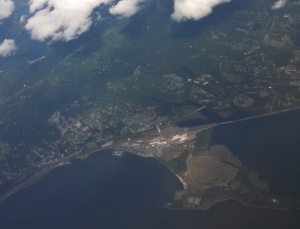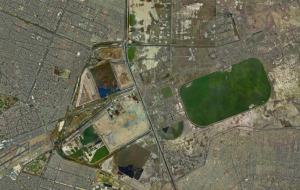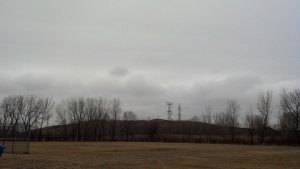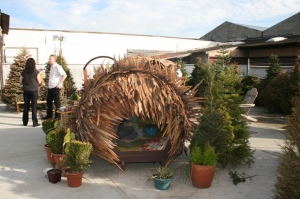After a long while, I made another visit to Byxbee Park in Palo Alto yesterday, which is now much larger than before but also quite bleak.
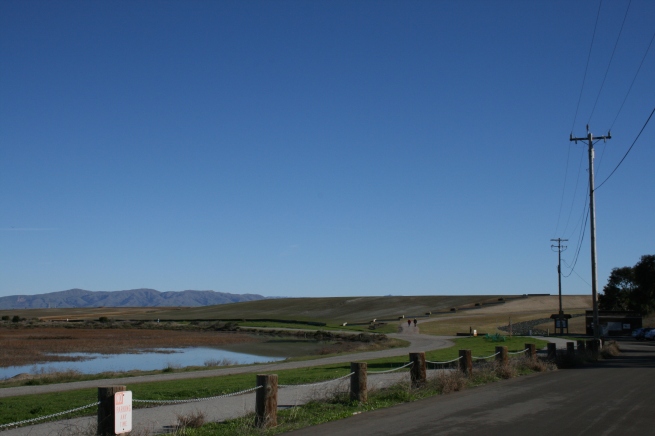
The parts of the garbage dump that were opened more recently are large, unnatural, and unnaturally bald mounds that loom over the more attractively sculpted hills closest to the bay. The work is not quite done, and some of the slopes are just plain clay with pipes and other machinery sticking up at regular intervals.
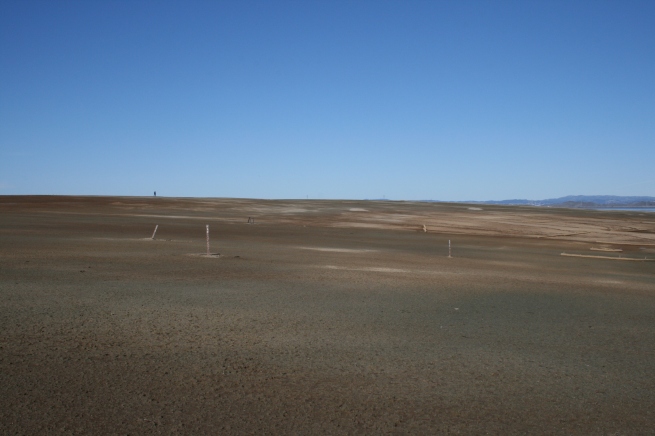
You can get a better workout now that the place is larger, but it used to be more human scale. It was unkempt, but more inviting. I sort of miss the quirky old art installations that have been removed. No more midden-hillocks for the ground squirrels to turn into Swiss cheese. The methane flare-off has disappeared, and the “keyhole” laid out in shellfish around it has been erased. The shellfish paths have been paved over. Weird rivers of rock have been added. The chevrons have been made severely straight.
On the positive side, the trails over the dump connect to the trails through the salt marsh behind it, so you can enter from the frontage road along the 101. Also, birds still love the place. Some of the views are stunningly beautiful.
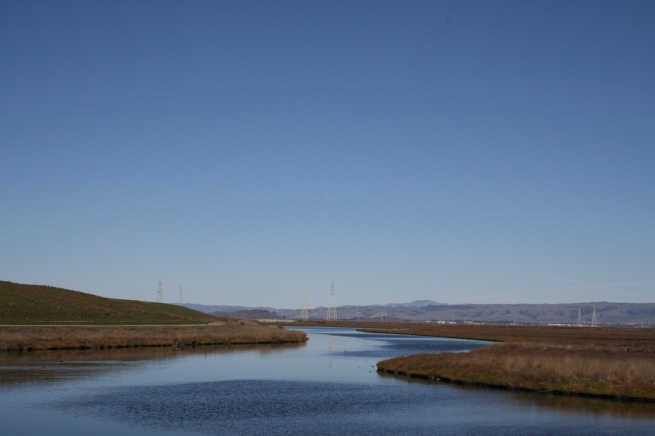
You can still surprise a hare hopping quietly along the trail.
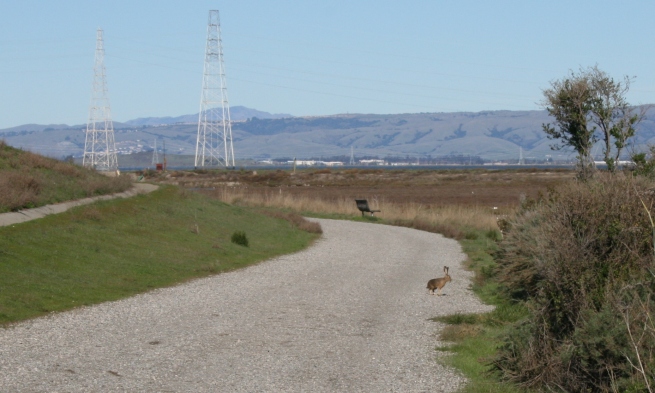
And people come here to do unusual things, like the two guys exercising their bald eagle.
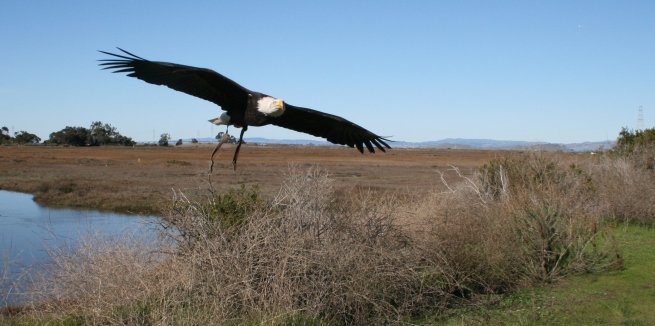
It may not be natural, but it’s better that someone cares enough to rescue it and do what can be done.
 The dump is the “scar” on between two hillside, pretty much in the center of the image. A declivity between two ridges is being filled with waste, much like a glacier would fill a valley. Only this one doesn’t retreat as the climate heats up.
The dump is the “scar” on between two hillside, pretty much in the center of the image. A declivity between two ridges is being filled with waste, much like a glacier would fill a valley. Only this one doesn’t retreat as the climate heats up.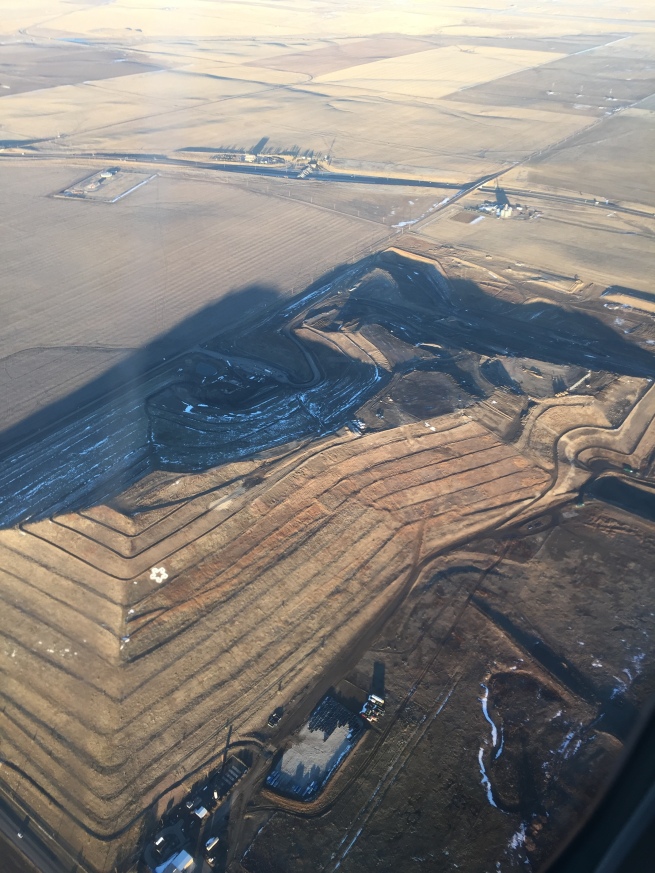 This dump is active, and so the only information I could dig up on it is that it is operated by Republic Services. Opening hours are from 8:00 – 5:00 daily (except for Black Friday). Perhaps one of these days I can find time to visit and make an offering of trash. (If you visit a garbage dump without bringing garbage, you are instantly suspect, in my experience, and likely to be denied entry.)
This dump is active, and so the only information I could dig up on it is that it is operated by Republic Services. Opening hours are from 8:00 – 5:00 daily (except for Black Friday). Perhaps one of these days I can find time to visit and make an offering of trash. (If you visit a garbage dump without bringing garbage, you are instantly suspect, in my experience, and likely to be denied entry.)